Having the right PSI in your bike tires can make a world of difference. However, it would be an oversimplification to say that less air offers a more comfortable ride and more air makes you go faster. While this is true in many instances, the fact of the matter is that proper inflation for optimal performance depends on the individual rider and his or her bike.
Every tire has a recommended psi printed on its side close to where it touches the rim. This is usually written as a range (for instance, "90 to 115 psi") since there are reasons why you'd want to be on the higher or lower end, which we'll get into shortly.
Basic rule of thumb if your tires happen to not indicate a recommended pressure: pump them up until they're firm but still slightly squeezable. Alternatively, there are generally-accepted ranges based on bike type:
| Bike tire type | PSI range |
| Kids' bike tires | 20–40 PSI |
| Narrow tires / road bikes | 80–130 PSI |
| Medium tires / hybrid bikes | 50–70 PSI |
| Thick tires / mountain bikes | 30 PSI (off-road) 50 PSI (on-road) |
Road bikes and tires are built for speed over smooth surfaces. Higher air pressure lets them roll easier and faster. A typical range for these would be between 80 and 130 psi, although racers can sometimes go as high as 160 psi. Quick tip if you're caught inflating a road tire without a gauge and need to ballpark it: at 100 psi, a tire can barely be compressed with your thumb.
Unlike roadies, mountain bikes are flying over loose, bumpy terrain. Tires with too much air lead to too much bounce, making for a jolty ride. Lower pressure helps with shock absorption while also giving you more traction since more of the tire comes into contact with the ground. MTB manufacturers recommend between 30 and 50 psi on most of their bikes since this is a nice balance between on-road (closer to 50) and off-road (closer to 30) riding.
Hybrid bike tires require pressure levels between those of road and mountain bikes. This is usually in the 50 to 70 psi range. Kids' bikes have the lowest recommended inflation, typically 20 to 40 psi.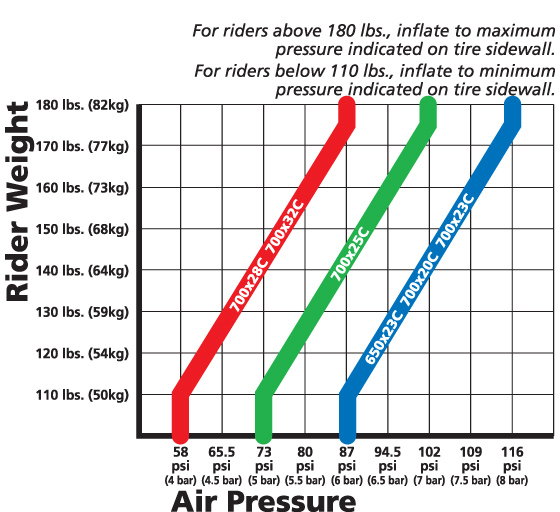 Keep in mind that these are called "recommendations" for a reason, though. A number of factors go into the inflation process beyond just your style of bike.
Keep in mind that these are called "recommendations" for a reason, though. A number of factors go into the inflation process beyond just your style of bike.
Which leads us to…
Because nothing in life is ever as simple as it should be, we've included a few more things to ponder when it comes to making sure everyone's tires are in good shape for their next ride.
As a general guideline, more weight = more pressure. Whether you're competing in the Tour de Whatever or shredding up the backcountry, heavier riders should use a higher psi than lighter ones to see the same performance in their tires. For perspective, someone weighing in at 200lbs will probably want to pump in around 20 more psi than someone who's 160. There's no real slide rule for this, so just play around with the pressure and see what feels best for you. Also keep in mind that rear tires tend to carry more weight than those in front, so adjust accordingly as necessary.
We know through physics that temperature affects air pressure. So, all else being equal, people biking in Miami in August are going to have higher pressure in their tires than people biking in Boston in January. In addition to weather, sustained deceleration using rim brakes generates friction that can increase temperatures inside the tube significantly. Fortunately, they also cool off relatively quickly, but it's something to keep an eye on during long descents. It may also be worth mentioning to your burgeoning roadster as he or she is learning the basics of hand braking.
In short, don't do either. If you overinflate, you run the risk of blowing the tube either while pumping or while riding due to sudden or constant impact. If underinflated, the low pressure could cause pinch flats. This occurs when the tube becomes squeezed between the rim and tire casing by hitting a bump with an underinflated wheel.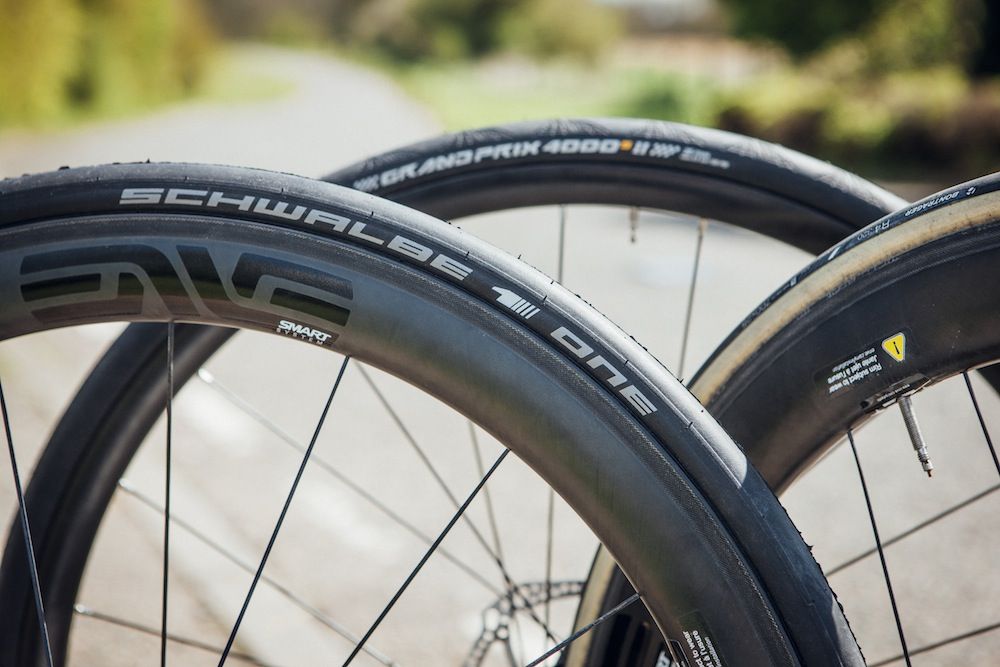 Not only does this damage the tire, it can also hurt the rim. Plus, flat tires slow you down and make you pedal harder, which is just no fun.
Not only does this damage the tire, it can also hurt the rim. Plus, flat tires slow you down and make you pedal harder, which is just no fun.
"How often should I inflate my tires?" is a common question among many casual bikers. The answer depends on how often and how hard you ride. Some people break out the pump every few days, others once a week, and still others even less regularly than that. Even if you or your kids have left your wheels in the garage for months, air tends to seep out slowly, anyway. Therefore, as a bike-safety best practice, just like a car it's certainly never a bad idea to check your tires before each ride. Especially if it's been a while.
The pro's choice, floor pumps do a great job. They are easier to pump and attach, and will pump your tires up much quicker than a hand pump will. Some come with gauges, which eliminate 1) the need to switch back and forth between a pump and standalone gauge, or 2) if you're really lazy, outright guesswork.
However, some expert cyclists are cautious of floor pumps with gauges, as the accuracy of the gauge can svary and may be off by as much as 10 PSI. On the plus side, if the gauge is consistent you can calculate the difference and adjust your target PSI to compensate.
It may be tempting to simply use the air compressor at your neighborhood Exxon, but these are less than accurate and can often overinflate your tires (it's a gas station, they're meant for cars). For serious riders whose circuits take them far from home, a small hand pump can help you change a flat on the fly. Carbon dioxide inflators accomplish the same thing if you're an air-in-the-can kind of guy.
Essential for any enthusiastic cyclist, hand pumps are harder work to fill the tire with, and aren't as quick. But they're transportable, so you always have your pump with you. It's simply foolish to embark on any long distance bike ride without your trusty hand pump and puncture repair kit.
So there you go, we hope this quick guide to bike PSI pressure was useful. To recap: figure out what feels most comfortable based on your particular cycling style. Go with that. Keep an eye on your pressure, and check it before every ride. You'll get a feel for it over time. Like, literally.
Here are a few things you need to know about the recommended bike tire pressure for your cruiser:
Your Tire Pressure Will Fluctuate as Temperatures Change
A 10-degree change in temperature will increase pressure by about two percent. But, it’s not just temperature changes to look out for. Sustained rim braking during long descents can also increase the temperature inside of your tubes past 300 degrees.
Find My Bike Tire Pressure
Correct tire pressure not only enables your bike to ride more smoothly, but it also fends off flats. To find your bike tire pressure, you initially need to know what tires are on your bike. Narrower tires need more air pressure than widespread ones, with road tires needing about 80 to 140 psi (pounds per square inch) and hybrid tires needing 50 to 70 psi. You can also use a bike tire pressure chart to find your idyllic tire pressure for your bike.
Narrower tires need more air pressure than widespread ones, with road tires needing about 80 to 140 psi (pounds per square inch) and hybrid tires needing 50 to 70 psi. You can also use a bike tire pressure chart to find your idyllic tire pressure for your bike.
To find your perfect pressure, start within the middle of these choices according to what tires you own and then factor in your body weight. The heavier you are, the more tire pressure you will need. For instance, a 200-pound rider should use closer to 120 psi and a 120-pound rider can get away with only 70 psi.
Stop Resisting
Conventional knowledge makes us think that higher pressure in tires equates to lower rolling resistance. This is because on a level, flat surface, hard tires flex less and have less contact patches. But as you know, no road is flawlessly smooth. Properly inflated tires will conform to impacts and absorb shock whereas overinflated tires will transmit impacts to the rider, which makes your ride less comfortable.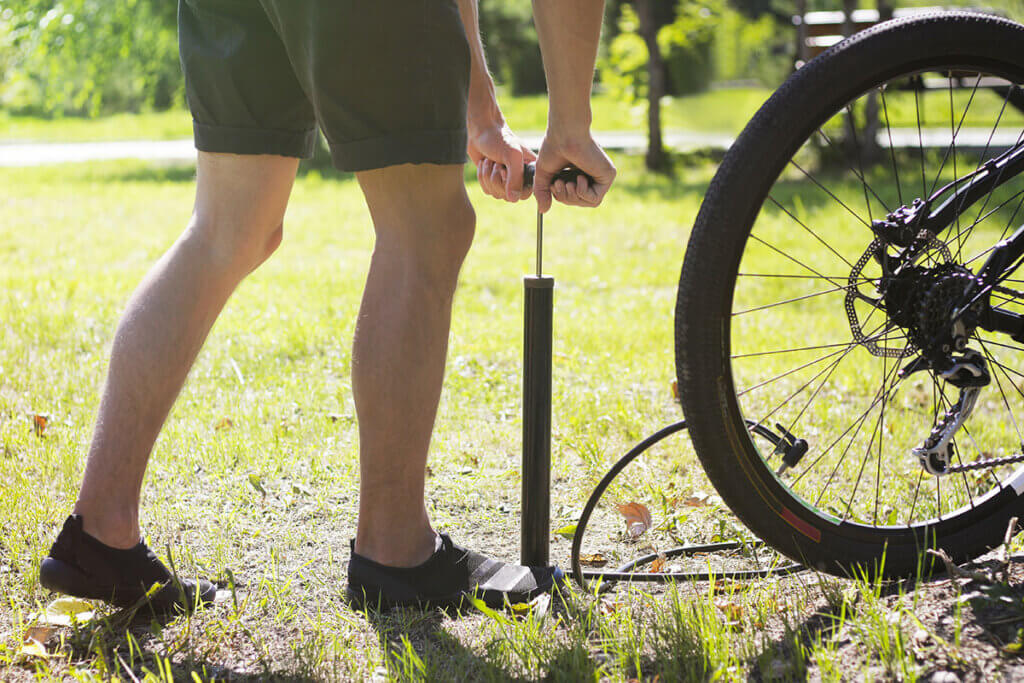
Keeping the Air in There
If you ride over sharp terrain, immediately sweep your tires with a gloved hand to get rid of dirt and debris. For the ultimate protection, utilize tires liners. Get in the routine of checking your air pressure before each ride to ensure that your tires are properly inflated.
Frequently Asked Questions About Tire Pressure:
How Do I Know if My Bike Tires Need Air?
The most accurate way to determine if your bike tires need air is by checking them with a tire gauge. Locate the air valve on the inside of your tire and remove the cap. Press the air pressure gauge down on the valve and watch for the reading. Check the side of your tire to confirm whether it is within the acceptable range.
Keep in mind that tire pressure increases when you are riding. The range provided is the range for when your tires are cold. If you have been riding for a while, expect the pressure to be higher than normal.
If you don’t have a tire gauge handy, you can check by feel or look. For a road bike, the tires typically need to be inflated to the point at which you can’t easily squeeze the sides of the tire. For a mountain bike, sit on the bike and look down at the tires. If they protrude more than a couple of millimeters, they need more air.
How Much Air Should Be in My Bike Tires?
The recommended air pressure is written on the side of your tires in embossed lettering. Simply fill your tires with a pump and check with a gauge that the pressure matches the recommended range. This range is for cold tires. If possible, only fill your tires when your bike has been sitting still for at least 30 minutes.
If you don’t have a gauge, you can use the methods described above to determine if your tires need air. A road bike will typically need higher pressure than a mountain and fat tire bike.
Does Air Pressure Affect Your Bike Ride?
Yes, air pressure can significantly affect your bike ride. Low air pressure will cause the bike to ride less smoothly and get more flats. Additionally, the bike will typically be slower when in motion because of increased friction.
Low air pressure will cause the bike to ride less smoothly and get more flats. Additionally, the bike will typically be slower when in motion because of increased friction.
However, overinflated tires are also a problem. They fail to absorb impacts properly, which can be uncomfortable. Additionally, they have more trouble getting moving from a standstill. Air pressure within the recommended range is important.
When buying a bicycle for themselves, many do not even think about the fact that the convenience and comfort when riding it is achieved by properly selected tire pressure. The service life of the bicycle, the speed of riding, the degree of tire wear, safety, control of the two-wheeled friend depends on how the wheels are inflated.
The service life of the bicycle, the speed of riding, the degree of tire wear, safety, control of the two-wheeled friend depends on how the wheels are inflated.
Many cyclists believe that inflating the tires is only necessary for a good bike ride. However, flat tires have a wider area of contact with the road, which means that grip will be better, but it will be very difficult to accelerate to a speed of 30-35 km / h on such tires.
When inflating your tires, you should always consider the type of terrain or surface you will be driving on. If the walk is supposed to be on an asphalt road, the tire pressure of the bicycle should be close to the maximum allowable value. Elastic wheels on a flat surface will provide a smooth rolling and high speed of movement.
For cross-country riding with unpaved paths, it is better to set the tire pressure to medium tolerable, so that you can ride long distances in comfort and convenience.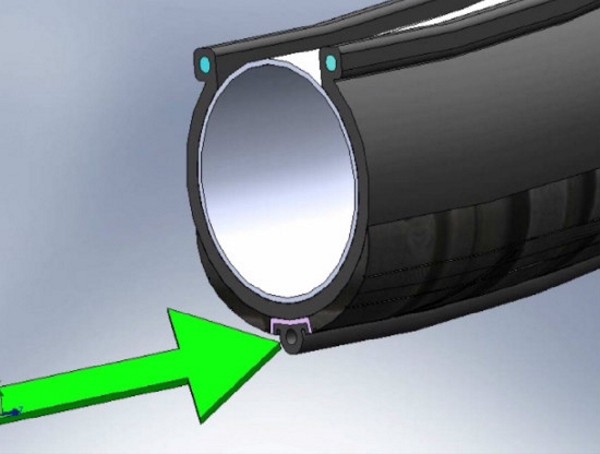 At high pressure, the grip of the wheel with the road will be minimal, respectively, all holes, pebbles, and bumps on the road will be sensitive. And with flat tires, the likelihood of damage to the wheel or puncture of the chamber increases.
At high pressure, the grip of the wheel with the road will be minimal, respectively, all holes, pebbles, and bumps on the road will be sensitive. And with flat tires, the likelihood of damage to the wheel or puncture of the chamber increases.
In order to protect yourself on the road, as well as to keep the bike or its individual parts intact, you need to know exactly the lower and upper limits of permissible values, to what pressure the bicycle wheels can be pumped.
Information about tire pressure gives you an advantage when cycling:
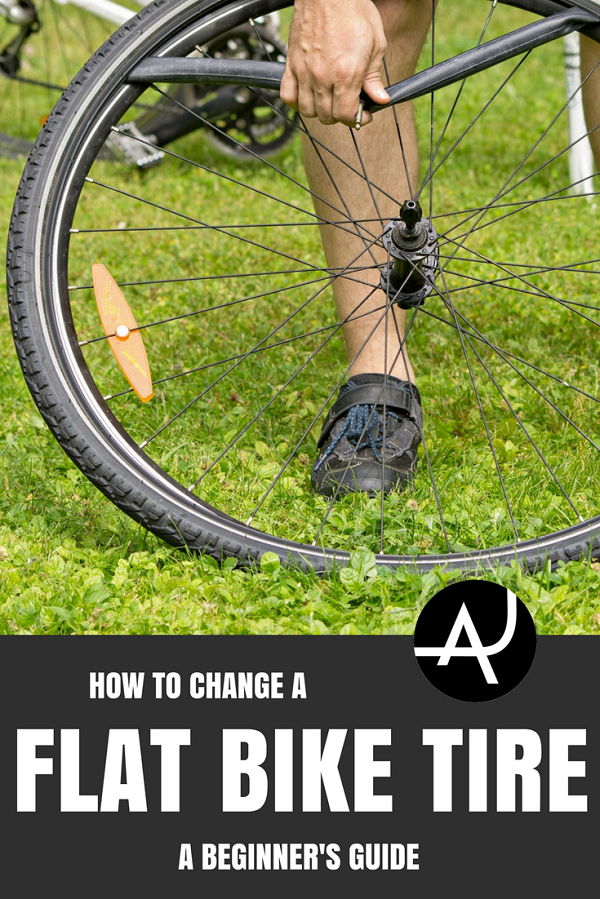
Forget the old "grandfather" way to check the wheel with finger pressure. No need to rely on tactile sensations, trying to feel with your hand the degree of rubber penetration on the tire. The air leaves the wheel gradually, through the pores in the rubber. Within 2-3 weeks, the pressure decreases by 0.1-0.2 atmospheres, but you cannot determine this with your fingers. The exact value at any time will help determine the pressure gauge that every cyclist should have in his arsenal. With its help, it is simple, with a minimum error, the level of pressure in bicycle tires is measured. A pump with a pressure gauge (floor or manual) will become an indispensable tool for cyclists.
There are three standard values in which bicycle tire pressure is measured.
kPa = 14.504 PSI
All these units are used to some extent - in different countries, by different manufacturers. For residents of Russia and the post-Soviet space, the change in bars is more familiar, since this unit is clearly associated with the pressure of the 1st Earth's atmosphere at ocean level. In America and Western Europe, a popular unit is PSI, as they actively use pounds and inches in measurements. Pascals are the least used unit of measurement, but the most modern. Some bicycle manufacturers write data on the wheels about the allowable pressures in all three systems.
For residents of Russia and the post-Soviet space, the change in bars is more familiar, since this unit is clearly associated with the pressure of the 1st Earth's atmosphere at ocean level. In America and Western Europe, a popular unit is PSI, as they actively use pounds and inches in measurements. Pascals are the least used unit of measurement, but the most modern. Some bicycle manufacturers write data on the wheels about the allowable pressures in all three systems.
Manufacturers indicate on the sidewall of the tire how many atmospheres to pump the bicycle wheels. Specifies the range within which the owner of the "iron horse" determines the desired values, depending on the specific factors of riding his bike. Values in the range are labeled from min to max, in two or all three dimensions. Numbers up to 10 are atmospheres (or BAR), tens-hundreds are PSI, and six-digit values \u200b\u200band with the prefix “k” / kilo are Pascals.
When inflating a tire, you must strictly follow the manufacturer's recommendations and try not to go beyond both the minimum and maximum pressure levels indicated on the tire. Moreover, it is better to leave a small margin of 0.2-0.5 BAR, both in one direction and in the other, so that the tire does not burst.
Moreover, it is better to leave a small margin of 0.2-0.5 BAR, both in one direction and in the other, so that the tire does not burst.
The pressure in the wheel is kept by the tire, not the tube, so there is no single standard for its value. There are several significant factors that determine how much you need to pump the wheels on a bicycle.
Tire type is determined by the surface of the track that the cyclist will predominantly ride on. Accordingly, the level of inflation of the bicycle wheel will be different. There is a direct dependence on the roughness of the tread and the width of the wheel - the more lugs and the wider the wheel, the lower the pressure should be. Empirically, cyclists quickly determine how many atmospheres should be in the tires of their bicycle
Many cyclists do not think about the fact that air temperature affects the pressure level in bicycle tires.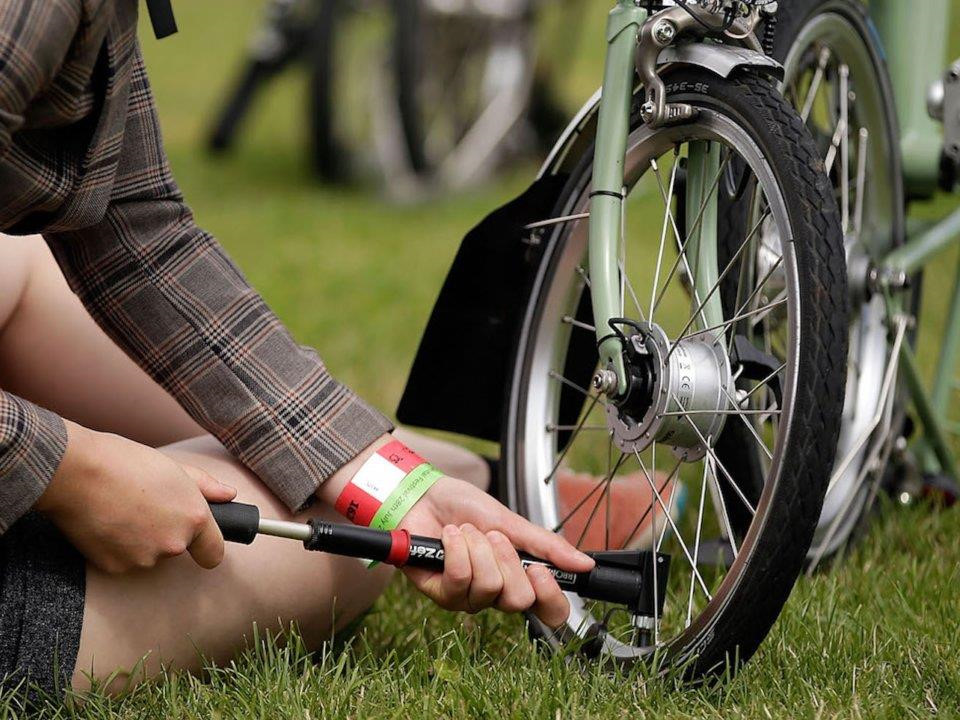 From the course of school physics, we recall that when heated, bodies expand. This means that in hot sunny weather, the pressure inside the air chamber will increase without additional pumping. Conversely, on cold winter days, a decrease in tire pressure is quickly felt due to low temperatures. So, when going for a bike ride in the cold season, the pressure indicators need to be adjusted a little higher than usual, and in the summer heat, let the air out a little. It is worth noting that when going on a bike ride, you should always take into account the weather conditions.
From the course of school physics, we recall that when heated, bodies expand. This means that in hot sunny weather, the pressure inside the air chamber will increase without additional pumping. Conversely, on cold winter days, a decrease in tire pressure is quickly felt due to low temperatures. So, when going for a bike ride in the cold season, the pressure indicators need to be adjusted a little higher than usual, and in the summer heat, let the air out a little. It is worth noting that when going on a bike ride, you should always take into account the weather conditions.
It is important to consider the load on the bike created by the weight of the rider, especially the fact that most of it is on the rear wheel. Therefore, the degree of its pumping should be slightly higher than the front, the optimal difference is 10%.
To calculate the optimal tire pressure for a bicycle, given the weight of its rider, you can use the table:
Rider weight (kg) Pressure (atmosphere) Pressure (PSI)
The nature, riding style and type of bicycle also affect tire pressure.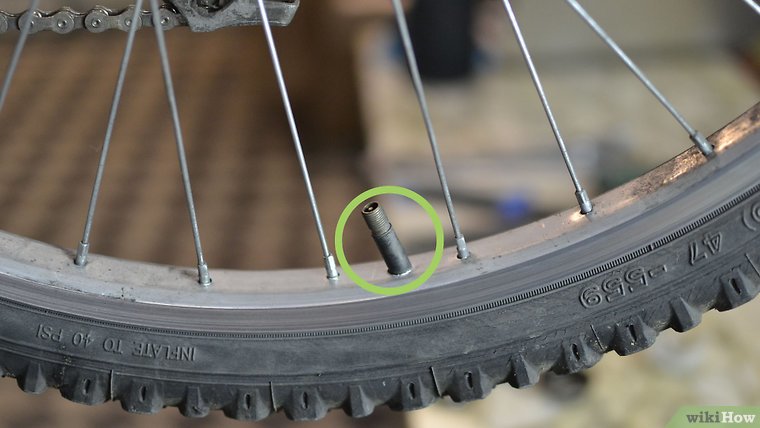 Buyers who prefer an active pastime often opt for mountain bikes with 26-inch wheels, which ride well both on city streets and in rough terrain.
Buyers who prefer an active pastime often opt for mountain bikes with 26-inch wheels, which ride well both on city streets and in rough terrain.
To understand to what pressure to inflate the wheels of a bicycle, it is necessary to take into account the features of both the bike itself and other, at first glance, weightless factors. For example, weaving threads on a tire, rim thickness, driving style. The likelihood of a tire coming off a wide rim is much less than a narrow rim, because a wider rim will hold the tire better than a thin one. Mountain biking already by its name suggests the presence of a difficult surface on the track, with possible obstacles and bumps. The driving style is more aggressive than on a smooth, calm trajectory, it obliges you to increase the tire pressure to a level slightly less than the upper limit.
The diameter of the wheel will also affect the selection of the optimal pressure value, since the larger it is, the higher the volume of air pumped will be. However, for mountain bikes it is not so important whether the wheel diameter is 26 or 29 inches, it is much more necessary to pay attention to the parameters of the rider's weight and the type of track.
However, for mountain bikes it is not so important whether the wheel diameter is 26 or 29 inches, it is much more necessary to pay attention to the parameters of the rider's weight and the type of track.
There are no hard and fast rules about how much you need to inflate the wheels on your bike. There is common sense, experience, practice. Manufacturers can recommend certain values, but only the owner himself will determine exactly which road he will ride, in what weather conditions he will drive, take into account his weight parameters or not. The decision, what pressure in the wheels will be ideal, is sure to be found.
Every cyclist is obliged to monitor the condition of his two-wheeled horse. It is from this that the envy of its service life and convenience when driving will be. When you go on your next trip, do not forget to measure the pressure in your tires. This procedure is mandatory, because it directly affects the comfort while driving.
This procedure is mandatory, because it directly affects the comfort while driving.
Oddly enough, first of all, the quality of cycling, especially on asphalt, depends on the pressure in the bicycle wheels. Under-inflated wheels easily break through and extinguish a large percentage of the efforts of the cyclist, while over-inflated ones can damage the tube and lead to its rapid wear. Accurate knowledge and experience of riding will help you find the golden mean.
Many people are accustomed to checking tire pressure using the old-fashioned method with their fingers. However, this method is very inaccurate, and the concept of a “well-inflated wheel” for each cyclist can be very different. That is why it is always better to have a pressure gauge on hand in order to accurately determine tire pressure.
Its cost is quite low, so everyone can afford such an acquisition.
Contents
In fact, the optimal pressure in the tires of a bicycle is a purely individual parameter that each biker varies within certain limits for himself: according to his riding style, according to the planned track and current level of training. Limits are set by technological restrictions, which we will consider further.
Limits are set by technological restrictions, which we will consider further.
Here are the main factors to consider when choosing the level of inflation:
Considering all the pluses and minuses, one recommendation can be made: the wheels should be inflated enough to provide good traction and not damage the tube. To do this, there are standards for what pressure is considered acceptable. We will consider them further.
If the wheels are overinflated, the bike will have a good roll, but the tire will not absorb at all on uneven surfaces. All difficult sections will be much harder, since the contact patch of the tire with the ground will have a minimum area, and you will be skidded when cornering. Needless to say, when cycling in winter, the situation is aggravated by slippery surfaces. In addition, pumping can cause the wheel to explode. Old Soviet cameras are especially susceptible to this, the material of which is already turning into dust from old age. The tire breaks from excessive pressure not immediately, but for example on a hill, where a pebble falls under the wheel. This situation is dangerous because the tire is sometimes literally torn off the wheel.
All difficult sections will be much harder, since the contact patch of the tire with the ground will have a minimum area, and you will be skidded when cornering. Needless to say, when cycling in winter, the situation is aggravated by slippery surfaces. In addition, pumping can cause the wheel to explode. Old Soviet cameras are especially susceptible to this, the material of which is already turning into dust from old age. The tire breaks from excessive pressure not immediately, but for example on a hill, where a pebble falls under the wheel. This situation is dangerous because the tire is sometimes literally torn off the wheel.
The air pressure in the tires of a bicycle also affects the "piercing" of the wheel. Pumped rubber easily collects all the carnations and glass on the road.
If the tires are flat, the situation is no better than if the tires are inflated. The tire does not fit snugly on the rim, may come off the wheel, and when driving onto a curb, a puncture may form (the so-called snake bite). The roll of the bike decreases and pedaling requires an increasing amount of force. However, when choosing between an over-inflated tire and an under-inflated one, it is better to opt for an under-inflated tire. But we must not forget about reasonable limits. If the tire drags like a rag, then you clearly made a mistake with the pressure.
The roll of the bike decreases and pedaling requires an increasing amount of force. However, when choosing between an over-inflated tire and an under-inflated one, it is better to opt for an under-inflated tire. But we must not forget about reasonable limits. If the tire drags like a rag, then you clearly made a mistake with the pressure.
The secret of the right choice is very simple: just look at the tire being inflated. Next to the information about the tire size, there will also be information about the allowable pressure range in the chamber.
Why is this information not printed on the camera itself? Because in it the only point that is subjected to real load is the nipple, and its mechanism is very reliable. Otherwise, the normal pressure, which increases by an order of magnitude with fast skating, is taken by the tire, and how much it will be squeezed is the main limitation.
So, at too low a pressure, the tire will break closer to the rim, bite the chamber, leading to breakdown, and at high pressure, it may simply burst on one of the bumps or when driving on hot asphalt.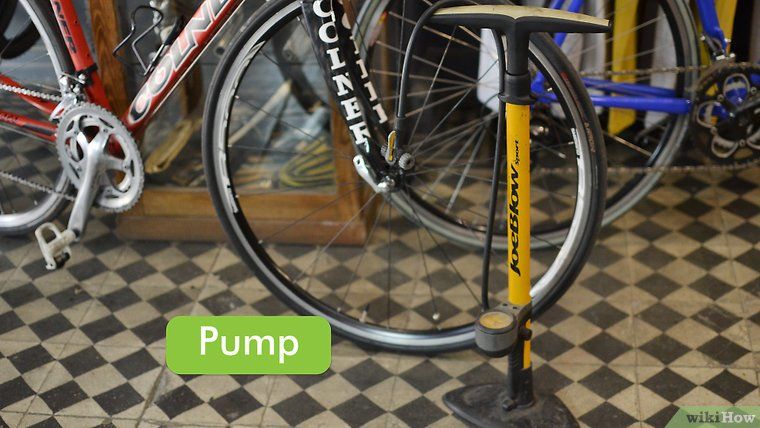
Since many tire manufacturers focus on the American market, the most common designation is Psi. In English sources, it is usually simplified to “pound”, or pound, that is, when they say that the pressure is 2 pounds, they mean exactly Psi. This unit of measure is obsolete, used only in the USA, but, as they say, "more alive than all living things."
Intelligent pressure sensor data on smartphone screen
Bars are also obsolete units of measurement, but are actively supported in Russia and many other countries, incl. European. This unit of measurement is actively used, as it echoes the “atmosphere”, which is quite convenient for measurements.
Pascal is the only metrically correct unit from the list, but is rarely used in bicycle notation.
The ratio between all units is as follows: 1 Bar = 100,000 Pa = 14.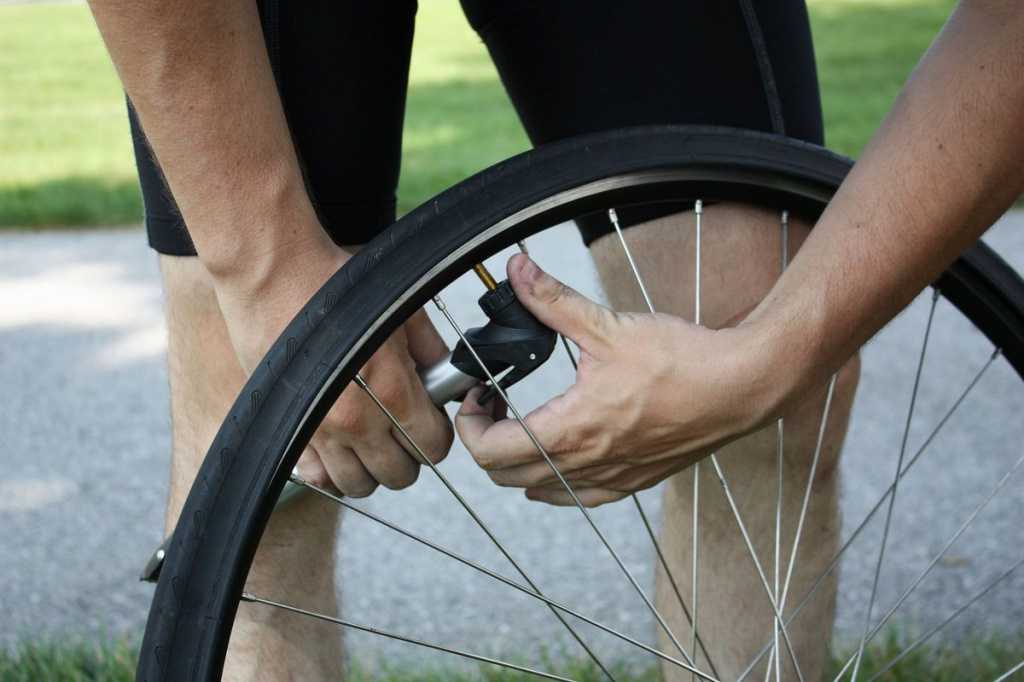 504 Psi.
504 Psi.
What do they write on tires? For example, (2.38-4.0) is clearly atmospheres, or BAR, and (95-135) is Psi. If the number has more than 3 digits or the prefix "k" (kilo), we are talking about metric Pascal. Most often, the desired value is located under the size designation and is duplicated in BAR and Psi as a range, clearly indicating to what pressure you can pump.
Actually, the manufacturer indicates the range within which the tire can function, further - the freedom of the cyclist.
Manufacturers indicate the recommended parameters on the side of the tire. Usually they are in the range of 35 - 60 psi (2.38 - 4.08 atmospheres). But still, this is a parameter that is selected purely individually. Therefore, there are a number of recommendations that are considered common to all people.
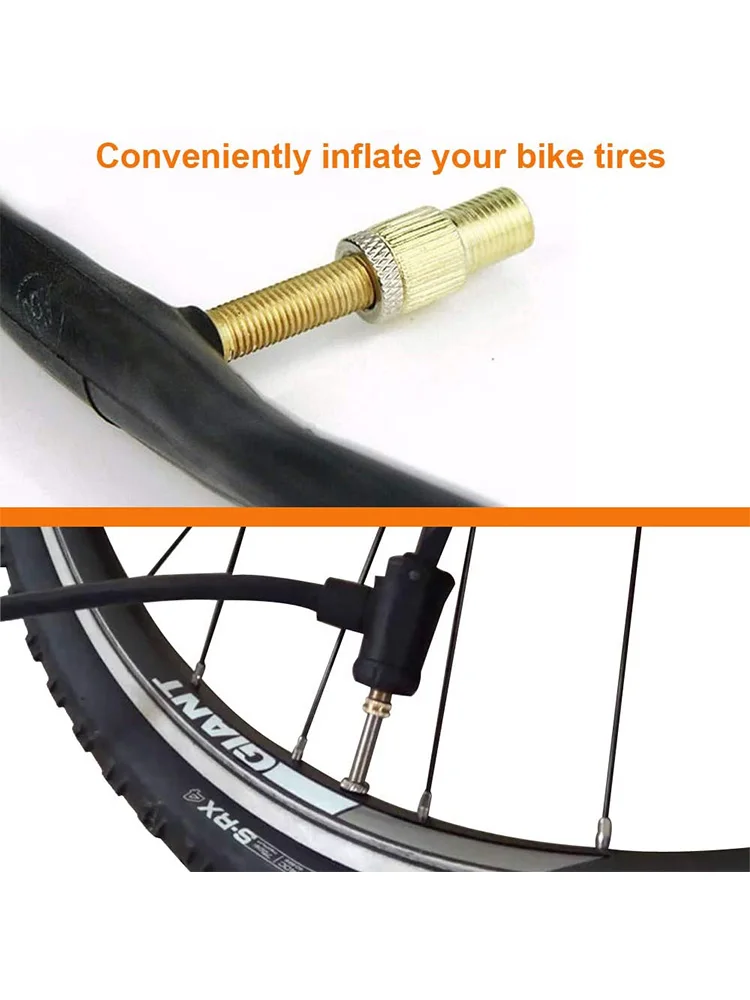
Important! With poorly inflated bicycle tires, the tire will move towards the rim, wringing the chamber. This will deform the wheel.
When the cyclist is training on relatively smooth asphalt roads, country and forest dirt roads and paths. For this style of riding, I prefer to inflate the wheels to 3.5-4 atmospheres. Such a high value of bar allows you to achieve good speed characteristics, high rolling, but when it hits bumps and stones, the fifth point immediately feels all the bumps in the road surface.
For those who like pleasure riding at low speed on smooth park roads, 2.5-3 atmospheres will be enough. On the Internet, you can often find recommendations to pump 2-2.5 bar into the wheels, this is justified only for tires at least 2 inches wide and when driving on rough terrain or poor coverage. Low pressure increases traction and comfort, but reduces rolling on smooth pavement. Under no circumstances should you ride at a pressure of less than 2 atmospheres.
Low pressure increases traction and comfort, but reduces rolling on smooth pavement. Under no circumstances should you ride at a pressure of less than 2 atmospheres.
The choice of terrain on which you prefer to ride obliges you to choose a certain type of tire, but in general, if you have a universal tread, you can make your ride comfortable on a particular type of road surface by changing the amount of wheel atmospheres. The figures below are based on a standard 2-2.1″ tire.
For gravel, mud, grass, sandy surfaces, it is better to inflate up to 2.5 atmospheres, which increases the adhesion of the tread to the ground and allows the wheel to smooth out all the unevenness of the road surface quite well.
For smooth asphalt roads, feel free to use a pressure of 3 bar or more. However, there is one thing here. If you have a fairly bald tread (wheels with a weak relief or slicks), and you drive at high speed on wet or even wet asphalt, then you risk slipping (flying out) on a turn. If it rains on the road, just slow down or deflate the tires slightly.
If it rains on the road, just slow down or deflate the tires slightly.
This article describes the most acceptable criteria for choosing tire pressure, but since each person independently selects the most convenient pressure values, I advise you, first of all, to experiment when mastering a bicycle.
The bicycle inner tube requires maintenance and pumping very often. Even on the most “hardy” city and mountain bikes, it is necessary to check and pump up the chamber once every 2-3 weeks, since air leaks not only through the nipple, but simply through the rubber. The high pressure "helps" the air molecules to find their way through the insufficiently dense chamber.
"City" or, simply, budget bikes, it is enough to inflate once every 2-4 weeks, mountain bikes - at least once every two weeks, road bikes - once a week, and road and sports bikes - before each trip.
Therefore, the pump is not only an emergency accessory, which is used only when a punctured tire is changed, but also a necessary part of preparation for departure. Active cyclists should consider purchasing two pumps:
Active cyclists should consider purchasing two pumps:
By the way, the place of a stationary pump is perfectly occupied by an ordinary car pump. It is also suitable for bicycles, it shows exactly how many atmospheres are inflated, and does not take up extra space. Some people prefer to pump up on "professional" pumps at gas stations, but not having their own professional tool can play a bad joke in case of an unexpected situation or when deviating from the standard route.
Here are some tables that will help you navigate in difficult situations, namely:
Mountain bike table:
| Rider weight (Kg) | Pressure (BAR) | Pressure (Psi) |
| 50 | 2,38-2,59 | 35-38 |
| 63 | 2,52-2,72 | 37-40 |
| 77 | 2. 72-2.93 72-2.93 | 40-43 8 |
| 91 | 2.86-3.06 | 42-45 |
| 105 | 3.27 | 45-|
| 118 | 3.2 - 3.4 | 47 - 50atmospheres (up to 130 Psi), up to the maximum specified by the manufacturer. Children's bicyclesFor children it is better to inflate tires to the maximum permitted value. This will make it easier to learn to ride a bike, as well-inflated tires have a smaller contact patch and require less effort for the rider. Seasonal changesSeasonal adjustments are quite serious, mainly for mountain bikes. In the summer, you should slightly underestimate the pumping and not rest on the maximum. Hot asphalt also heats the air inside the chamber, which increases the volume and, consequently, the pressure. Also, the pumped tire wears out very quickly. In winter, sometimes the maximum should be slightly exceeded in order to achieve maximum tread work, especially if the rubber is chosen with studs. Weight ChangesFor heavy riders or heavily loaded bikes, adding pressure is very important, as more weight will compress the bike's wheel and under-inflated problems can come out much sooner. The recommended pressure to add by weight is +1% for every kilogram of rider weight over 50. Approximate values by type of rubberOptimizing the level of inflation of bicycle tires depends on the type of bicycle rubber used, in particular mainly on the type of tires. If the bike is "shod" in slick or semi-slick rubber, then minimizing pressure is only permissible on hot days. As bench tests of slick (low-relief) tires have shown, reducing the level by 25.0% to the optimal level nullifies all their advantages. You can also give advice on how to inflate wheels with different tires. If the bike is "shod" in tires 2.0 ... 2.3 inches wide with cross-country treads, then the optimal pressure range is 3. Extreme riding tires (Downhill/Slalom 24″×2.10 or Kenda K905 20 x 1.95″) with compound tread, best inflated to medium recommended pressure. This will provide the necessary grip on the supporting surface. In the future, its indicator can be adjusted for specific driving conditions. BMX trick models should be moderately inflated, between maximum and minimum, in order to have sufficient traction, and then subtly varied for each trick. For winter skiing, you should choose a pressure slightly higher than normal, since at sub-zero temperatures the air in the tire becomes denser and takes up less space. How to check the pressure after inflation The exact value can only be checked with a pressure gauge. Experienced cyclists can read pressure by eye. You can inflate tires with a pressure gauge, memorize the value and squeeze the tire with your fingers. Remember the feeling, so you will learn to understand how inflated your tires are. DeterminantsDespite manufacturers recommendations, wheel chamber pressure is a matter of personal preference. Each cyclist adjusts this parameter for himself, for the track he is going to ride, for his personal riding style and level of technical training. Therefore, how much should be pumped up, everyone decides for himself. Every experienced rider knows a number of factors and operates with them:
ConclusionBicycle tire pressure is a very important parameter, you need to understand what limitations are imposed by tire manufacturers and what kind of riding style of a particular rider can be improved with just a couple of movements of the pump handle. In any case, how many atmospheres to pump at each moment is a unique decision, and it is made more on the basis of accumulated experience than according to strict rules. VideoQ&AWhat is the pressure in the bicycle tires? At 50 kg (110 lb) - 2. mountain bike tire table bar? The tire pressure of the mountain bike must be between 2.4 and 4.5 bar. What is the tire pressure on a road bike? Expensive quality road bike tires 21-23mm should have a pressure of 10-11 atmospheres. In wider or lower quality pressures are lower, the maximum value is always indicated on the sidewall. It must not be exceeded, it is advisable to maintain it before each ride. What is the optimal tire pressure for a fatbike? 10 psi - Rolled snow, paths
1 psi = 0. |